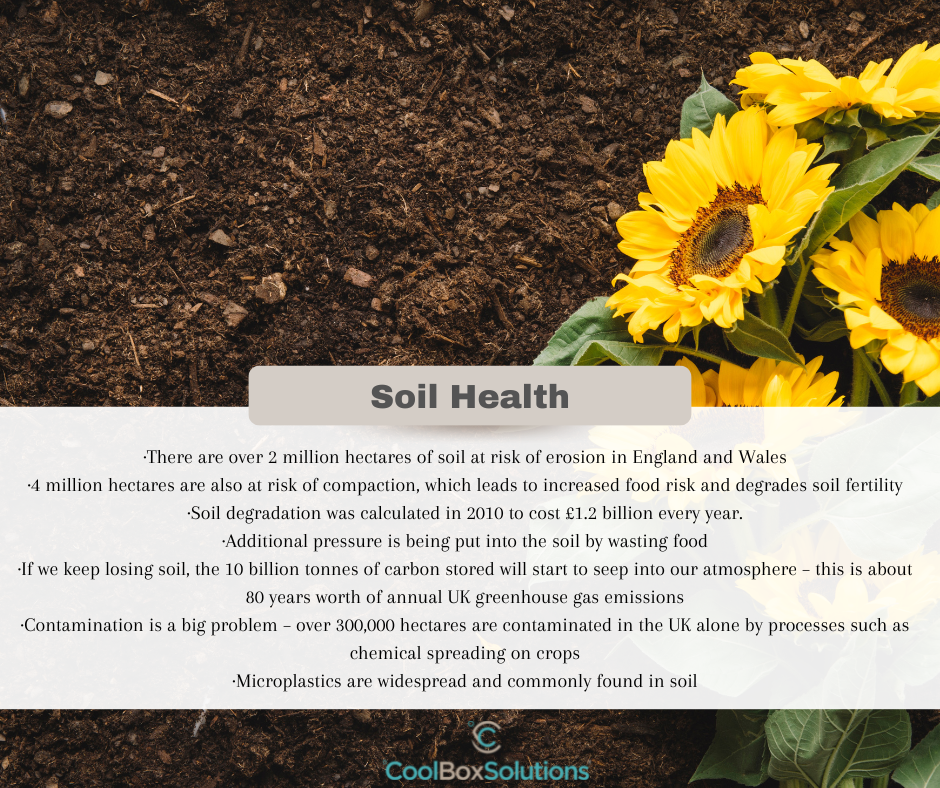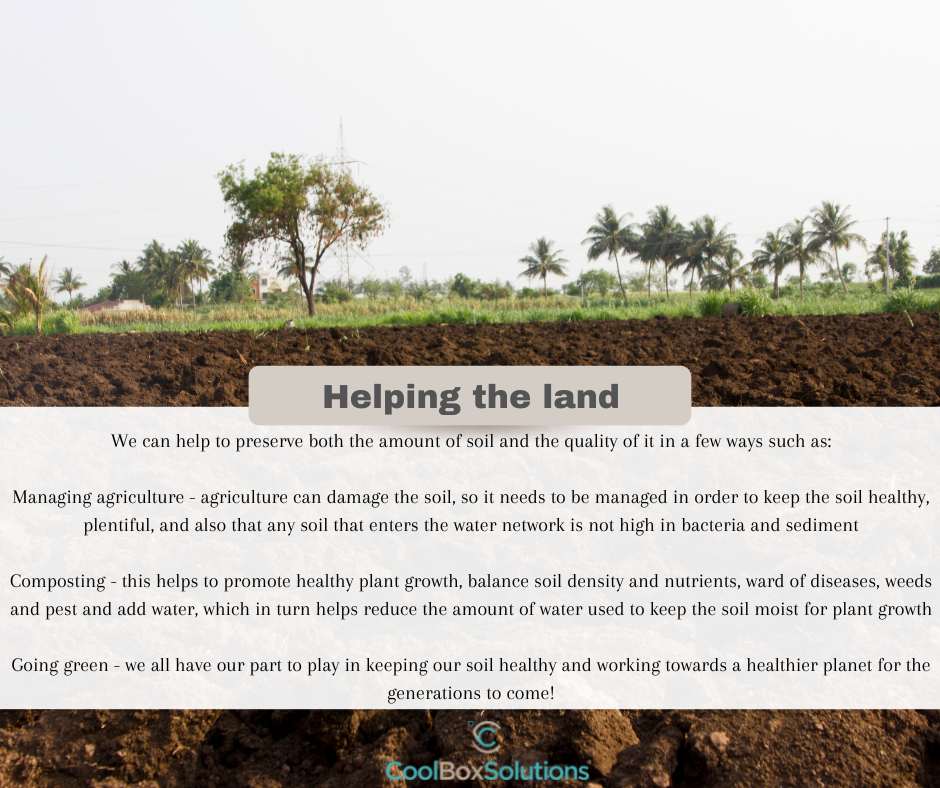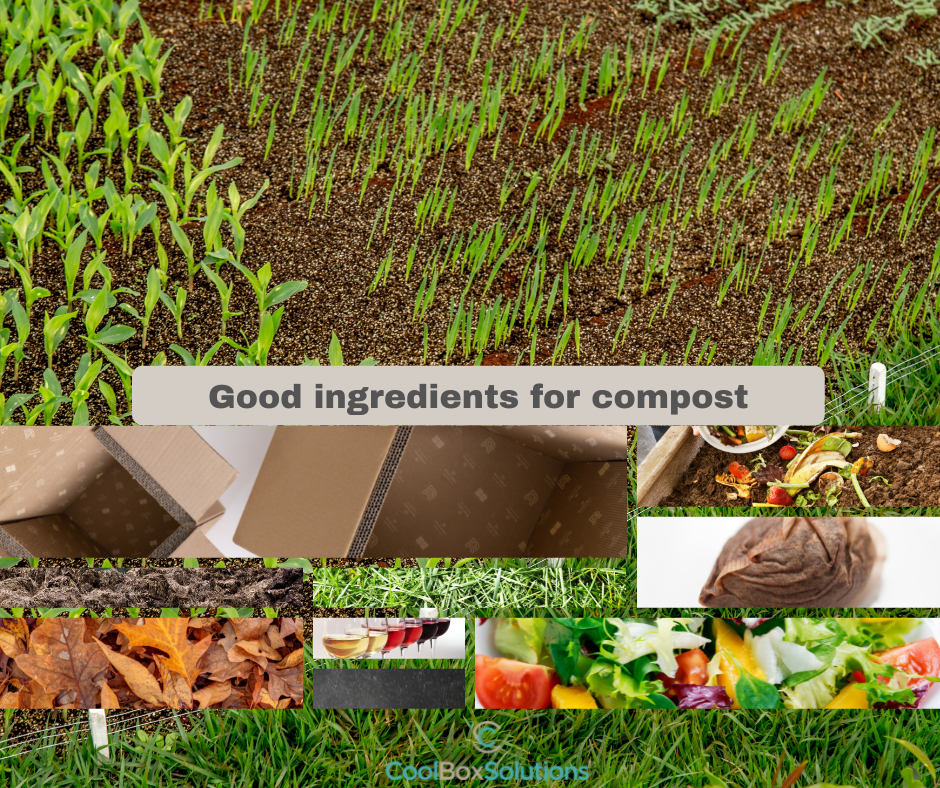We wrote this piece originally in the Summer of 2022, and since then the UK Environment Agency have updated their stats on soil health. We have updated these as below:
The latest report from the UK Environment Agency on the state of the soil in our country has now been published and it has thrown up some disturbing facts:
- There are over 2 million hectares of soil at risk of erosion in England and Wales
- 4 million hectares are also at risk of compaction, which leads to increased food risk and degrades soil fertility
- Soil degradation was calculated in 2010 to cost £1.2 billion every year.
- Additional pressure is being put into the soil by wasting food
- If we keep losing soil, the 10 billion tonnes of carbon stored will start to seep into our atmosphere – this is about 80 years’ worth of annual UK greenhouse gas emissions
- Contamination is a big problem – over 300,000 hectares are contaminated in the UK alone by processes such as chemical spreading on crops
- Microplastics are widespread and commonly found in soil
As a conclusion, it is clear that investment is very much required into soil monitoring to make sure that the biodiversity and biological processes that it supports do not further decline – this has not been a key focus until fairly recently, but obviously needs to be as we move forward.
2023 update: the Government’s 25 year Environment Plan has set the goal that soil health in England must be sustainably managed by 2030, with steps also required to restore soil health in areas where this has eroded.
Public money for public goods – this is a new system set to reward farmers for taking steps to maintain and replenish soil health (among other environmental factors). This is part of the new Environmental Land Management scheme.
What is causing these problems?

The simple answer is that there’s no one major cause for declining soil quality – the problems are varied and some harder to resolve than others. Primary causes include:
Population growth – as our communities expand, the pressure put upon rural and agricultural land becomes high as more and more greenspace is being taken for building and commercial sites. You only have to look at projects close to our HQ in Corby such as the Isham warehouse site (Symmetry Park), which has taken 136 acres of previous field and farmland to see the impact that this increase in demand has had. For scale, that’s the same as 68 football pitches….and nearly the same size as Wicksteed Park, for those who are local. Given that only 35 acres of newly created woodland were reported in the UK in 2021-22, we have a way to go to replace the land that we are losing (source: Forest Research).
Climate change – some may deny this is a problem, but we can definitely see a change in our climate, not only in this country but worldwide. Our recent record breaking highs of 40°C in Northamptonshire recently certainly took a bit of getting used to, and experts say this most likely will now be more of a normal temperature during the Summer months. As the temperatures rise, and we see more intense rain and storms, soil erosion will become more of a problem. Of course, this problem is further impacted by the fact that the carbon stored in the soil we’re losing will then end up back in the atmosphere.
Pollutants – pesticides and herbicides are known to be bad for soil health, but new research is throwing up more problems than was originally thought. For example, Glyphosate, which is a popular weed killer, has recently shown to last a lot longer in the soil than we thought it did – this then impacts the nutrients and organisms in the soil, as well as then being present in food grown in affected areas. It is a possible carcinogen so not what we want to be eating, nor do our insects and other organisms.
Other pollutants also enter the soil by way of manure and sewage sludge – such as antimicrobial resistance genes which are a human by-product of antibiotic use. These then alter the soil microbial community structure and also end up back in the human food chain.
Agriculture – whilst we need this industry to thrive, we have to be aware of the impact that agriculture, especially heavy agriculture, has on our soil. Heavy plant machinery, regular harvesting and a change in the need for crops being grown all have their own adverse impact, such as lower carbon content in the soil, erosion (with a resulting increase in river sediment) and also a need for more fields to grow more crop, which is often taken from natural grasslands, wetlands and orchards.
How can we protect our soil?

Clearly, we need to protect our soil and try to preserve the integrity of the soil we have, as well as promoting organic, healthier soil moving forward. There are different ways to go about this, including:
Managing agriculture – by managing agricultural practices, the amount of organic soil can be increased and improved. These practices include reducing the amount of tillage, looking at more environmentally friendly weed killers and pesticides, and using modest additions of fertiliser. The Farming Rules for Water (2018) also require farmers to test their soils – this is in part to help reduce the risk of soil erosion and run off, as well as ensuring that any soil that enters the water network is not high in bacteria and sediment.
Composting – composting and putting that compost back into the ground helps to promote healthy plant growth, balance soil density, add/retain nutrients in the soil and also helps to ward off weeds, disease and pests. Compost also helps to balance soil pH and add water, which can lead to less of a need to water crops and plants.

Ideal items to use in compost include cardboard, food scraps, teabags, grass clippings, leaves, manure, old wine, peelings, bread and even dust.
Going green – if we all work to reduce our carbon footprint, then we should see a slowing down in terms of carbon emissions and the climate change that is impacting our soil at present. This applies to everyone, from households to businesses, farmers to even the younger generation – it’s never too late to start trying to be more conscious of our planet and how we can make it better for the generations to come.
Key ways to “go green” and help slow down climate change include recycling to reduce toxic waste in landfill, reducing overall waste like food and textiles, composting and investing in sustainable products that have a low or zero carbon footprint.
How CoolBox can help
We didn’t write this piece to plug CoolBox but we must add in here that all of our systems are 100% sustainable, fully kerbside recyclable and can be either reused, collected by local council collections to be recycled, or added to your home composting heap to be eventually fed back to the soil.
Further reading
- Environment Agency Summary of the state of the environment: soil –https://www.gov.uk/government/publications/state-of-the-environment/summary-state-of-the-environment-soil
- Why Soil Loves Cardboard – http://www.coolboxsolutions.co.uk/soil-loves-cardboard/
- Forest Research Woodland Statistics – https://www.forestresearch.gov.uk/tools-and-resources/statistics/statistics-by-topic/woodland-statistics/
- Composting Council – Compost Benefits – https://www.compostingcouncil.org/page/PlantGrowthBenefits
